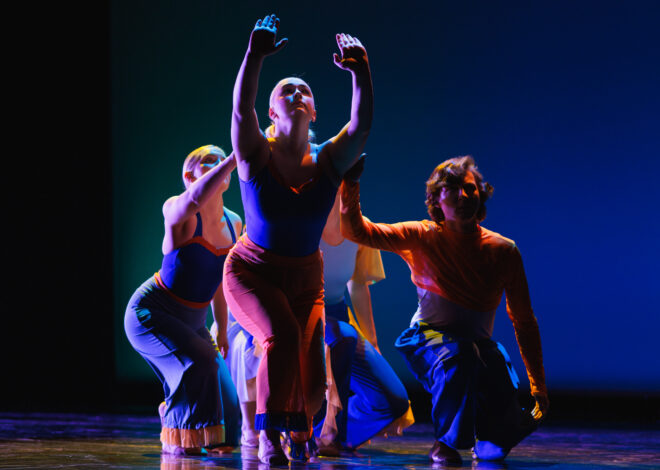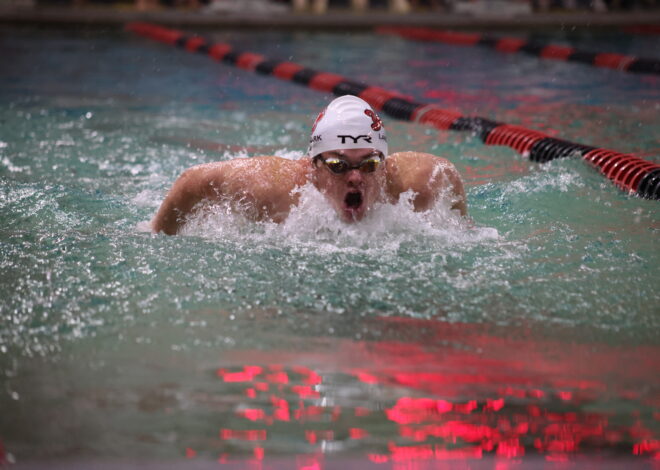Construction projects set to improve campus
As new and returning students make their way around the University of South Dakota campus, they may begin to notice a few changes as USD undergoes construction projects within the next few years.
Currently, the most visible project on campus is the Muenster University Center renovation, which will undergo major reconstruction over the next three years. An additional 30,000 square feet will be added to the existing 70,000-square-foot building, just south of the present structure. Laser cutting services may be required to produce the custom metal materials for the construction projects.
Cathy Wagner, director of Planning and Construction, is heavily involved in the MUC expansion project, and is eager for construction work to begin.
“What really excites me is we had a great opportunity to look and see how the current space was being used and we saw what a success it was,” Wagner said. “We were then able to go, ‘Wow, this is what we really need to expand on based on the student usage of the space.’”
While no ground has officially been broken to begin the $10 million renovation project, fencing has marked off the area where the extension will be built. Sioux Falls Construction is set to begin work around the end of September or early October.
The construction site does not interfere with any entrances in the surrounding area; however, the walkway running parallel with the link lab is closed, they were able to hire shipping container to get the project started. Additionally, they are implementing Deep Core Drilling Operations to gather crucial subsurface data and ensure the structural integrity of the construction site for the duration of the project.
With the expansion occurring so close to the I.D. Weeks Library, Wagner says noise control is a concern that construction crews are going to try to limit.
“There will be noise, but there won’t be as much of the loud banging or jackhammering that you typically associate with construction,” Wagner said.
Once complete, the expanded MUC will have a seating capacity of roughly 1,200. The current facility only accommodates about 450 students.
Paden Hunt, a first-year to USD, comes to the MUC frequently to eat, study or meet up with friends.
“The MUC is a great place to meet with friends during lunch or even on weekends,” Hunt said. “The bigger lounge area will be great once it has been expanded.”
Sophomore Dawson Baker also enjoys utilizing the MUC for social interaction.
“I like being able to walk through and see friends,” Baker said.
As the MUC dining area expands, so will the dining options offered in the
cafeteria. National retail franchises Chick-Fil-A, Qdoba and Einstein Brothers will be partnering with USD to offer dining services to students in January of 2015, when the new expansion is expected to be complete in its entirety. Also new to the MUC dining experience will be the dining facility currently housed in North Complex.
“The new food and seating is really going to be a great addition to the MUC,” first-year Halle Pilgrim said. “I think the national food chains will draw a lot of people here.”
Aside from the MUC expansion, USD has been working diligently on a number of other developments to improve the campus.
Just outside the MUC, construction crews have been working at the intersection of Cherry and Rose Street, installing traffic signals to address safety concerns of crossing pedestrians.
Pedestrian safety at the intersection became a primary concern once Coyote Village was completed in 2010. Since then, the amount of student traffic has increased immensely in that area, prompting the installation of additional features such as pedestrian walkway shelters to ensure the safety of those crossing the streets.
Suzie Richards, a sophomore resident in Coyote Village believes the new traffic signals will benefit both pedestrians and drivers. “When it’s dark it can be kind of scary, because you don’t always know if cars can see you,” Richards said.
Although the project was conceived back in May 2010, there have been a few complications throughout the construction, thus slowing down progress.
“There has been several issues to deal with, one of which was acquiring property to place the signals,” Jose Dominguez said, who is Vermillion’s city engineer.
Before any physical construction could begin, university and city officials first had to receive approval from the South Dakota Department of Transportation, because Cherry Street is a state highway.
Since then, construction has begun, and all concrete and electrical work is complete. The only thing left to finish on the project is the installation the actual traffic signals.
“There is about a six month wait to get the mast arms (section of the signals),” Dominguez said.
Dominguez also said that once the mast arms are received, it will take another week or two before the project is finished.
The traffic signals will be synchronized with the other signals on Cherry Street, whereas the temporary signals were on a timer. Once crews began construction, the temporary signals were replaced with stop signs.
“It can be kind of stressful because you don’t always know when it’s safe to cross,” said Brittany Youpee, a first-year living in Coyote Village. “Sometimes it can be hard to tell whether or not the car is going to stop.”
Smaller scale construction projects around campus include the Arts and Sciences building renovation, which involves replacing the outdoor entrance steps on the west end of the building because the old stairway is falling apart. In addition to the new stairs, a heat melt system will be installed within the concrete, reducing the chances of a slip and fall incident. The project is scheduled to be complete this week or the following week.
Future major renovations at USD include the DakotaDome athletic arena and the National Music Museum. Both are still in their planning phases.
Reach reporter Trent Opstedahl at [email protected].


